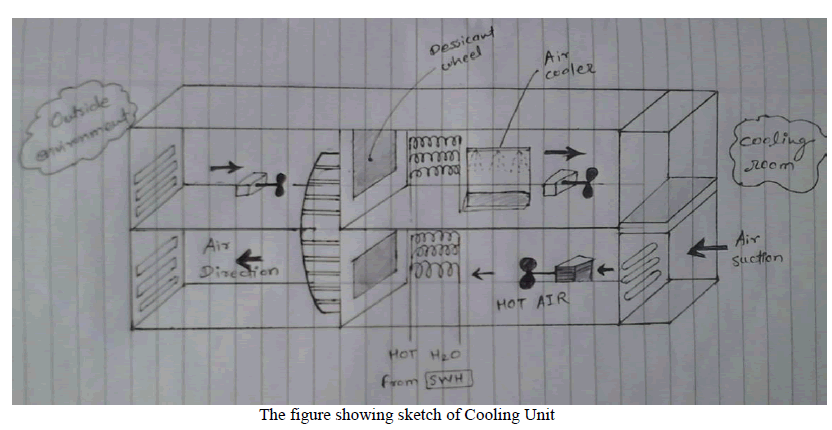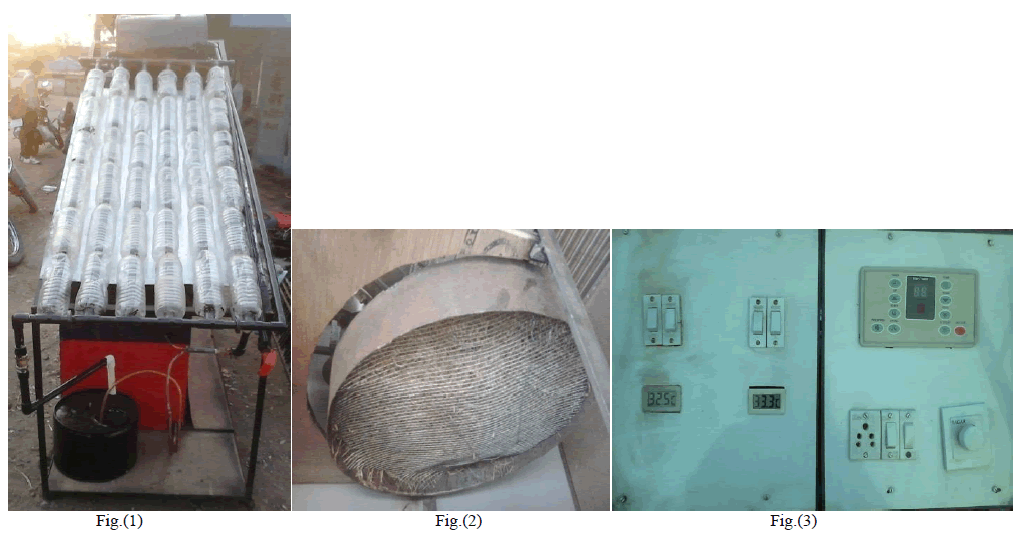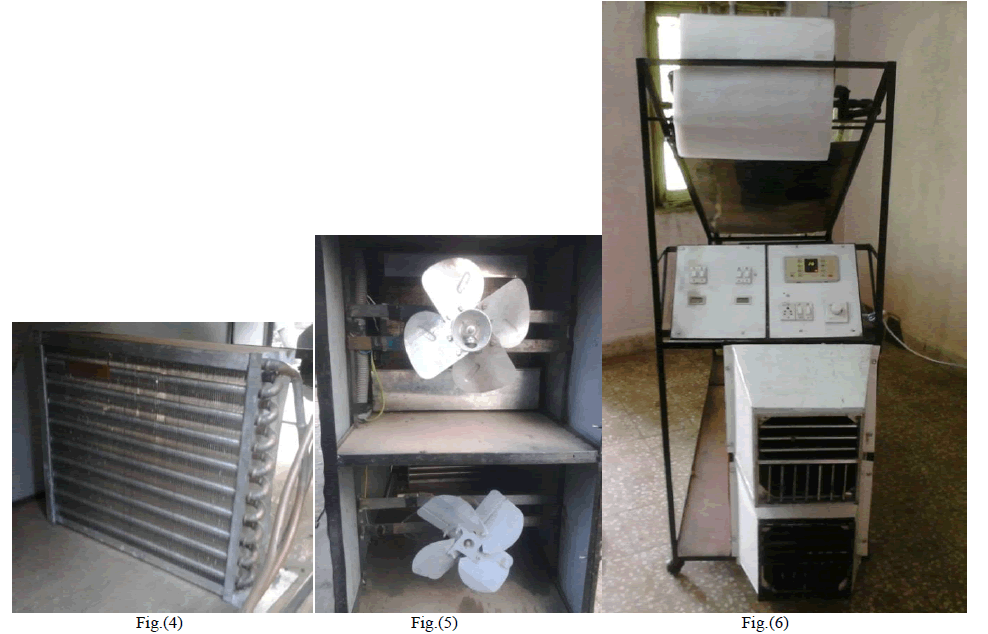ISSN ONLINE(2319-8753)PRINT(2347-6710)
ISSN ONLINE(2319-8753)PRINT(2347-6710)
Dr. U. V. Kongre1, A. M. Deshmukh2, A. R. Mirashe2
|
| Related article at Pubmed, Scholar Google |
Visit for more related articles at International Journal of Innovative Research in Science, Engineering and Technology
Reduce harmful emission and conserving energy has become the biggest issue in present scenario. Addressing this issue globally efforts were made to create new product and designs. This work is an extension to the concept of desiccant wheel. Solar desiccant air conditioner is an alternative to air conditioning that uses less electricity which is economical for us and environmentally friendly also, which reduces harmful emission. The solar desiccant air conditioner uses solar rays to heat the water which is used to reduce humidity of air by passing hot water through the condenser. With this constructed design it is seen that temperature and humidity levels reduces throughout the system.
Keywords |
| Desiccant wheel, Condenser, Solar water heater, Air cooler, Control unit. |
INTRODUCTION |
| Air-conditioning has been attained reliably and efficiently from the last few years due to the popularity gained by vapour compression system as a result of halogenated hydrocarbon discovery. The need to conserve more amounts of energy and reducing the harmful emission, such as the contribution to the earth's ozone layer depletion and global warming due to harmful emission during production and use, necessitate developing alternative technique. |
| The concept of desiccant cooling was first introduced by Hausen in 1935 (Pesaran et al., 1992). Based on this, many inventors like Shipman (1936), Fleisher (1939), Larriva (1941) and Altenkirch (1941, 1944) tried to develop commercial desiccant cooling systems but were not successful in the subsequent years. However, Miller and Fonda (1933) invented the first rotary silica gel desiccant cooler, but because of lack of understanding, the potential of desiccant dehumidifiers was not realized. |
| This system contains solar tube to heat the water. There are two processes in the system, one is the hot air process and another is the cold air process. The hot air process contains the condenser and desiccant wheel. The desiccant wheel made from the mixture of wood-wool and fevicol, which is compressed in the circular wheel, which is packed by net from both side. In cold air process air passed through desiccant wheel, condenser and finally through air cooler. |
| There are so many research have been made by many universities, which gives the very important contribution in the area of solar air conditioner. In Malaysia and Europe energy issue is important. Several projects for solar cooling have been analysed within the scope of "SACE Project (solar air conditioning in Europe)" to examine environmentally friendly air conditioning and to assess the potential of various heat driven cooling technologies for use with solar thermal systems. |
| The design of solar desiccant air conditioner is created to achieve the great result without using the compressor. In this system the compressor is not used, without using the compressor we can reduces the electricity which is required in the conventional air conditioner. In this system the solar energy is used to heat the water which is used as a fluid. The hot water obtains from solar heater will used to reduce the humidity from the air. The design system has some temperature sensor for maintaining the room temperature as required. |
II. METHODOLOGY OF DESIGN |
| The system has two processes, one is hot air process and another is cold air process. In hot air process the system takes the humidify air from room which then passed through the condenser in which the hot liquid flows. By passing the moisturize air through condenser the moisture in the air reduces to some extends. After, the air passed through the desiccant wheel, where most of the moisture in the air will be absorbed. In the cold air process the air from desiccant wheel will passed through condenser. In condenser the air passed through the flow of hot water by which fresh, dehumidified air gets. Then the dehumidified air finally passed through the air cooler where the fresh air reduces its temperature and converted into cold air, by this room gets the cold air. In winter days the room gets fresh warm air by cut off the power of air cooler and stopping the water supply in the air cooler. |
 |
III. DESIGN COMPONENTS AND MATERIAL |
| 1. Solar tube collector:- As shown in the Fig.(1) the system contains six solar tubes in the system to heat the water and it gives some tilting angle for receiving more solar energy to the solar heater. |
| 2. Water tank:- The system contains the two tanks. One is for storage and another for the outlet of the condenser. |
| 3. Desiccant wheel:- The desiccant wheel consist of the mixture of wood-wool and fevicol. The solid mixture of wood-wool and fevicol is fixed in the circular wheel packed by nets from both side as shown in fig.(2). |
 |
 |
| 4. CPVC pipes:- The CPVC pipes used in this system for transporting the hot water from inlet to outlet. |
| 5. PCB with sensor:- The system contains PCB with sensor which gives the temperature of outlet air on PCB display and overall system can e controlled by remote control as shown in fig.(3). |
| 6. Condenser:- The system containing two condenser of size 3/8 as shown in fig.(4). In which hot water is pass for removing moisture and to increase the temperature of air. |
| 7. Fans:- The system contains 3 fans. One for suck the air from the room, the second one for fresh and dehumidified the air and last one is pass the fresh air into the room as shown in fig.(5). |
IV. CONCLUSION |
| From the result it is seen that the system is work well in warm sunny days. In order to improved the system it is recommended that the desiccant wheel made by silica gel and clay mixture and made in casing which has shaft and bearing connected to the wheel. The addition of a motor to rotate wheels will help the overall system perform and regenerate desiccant material. The cool air will reach the room by a duct connected to the outlet of the system. The system gives the cooling effect up to 200C and heating effect up to 300C. |
References |
|